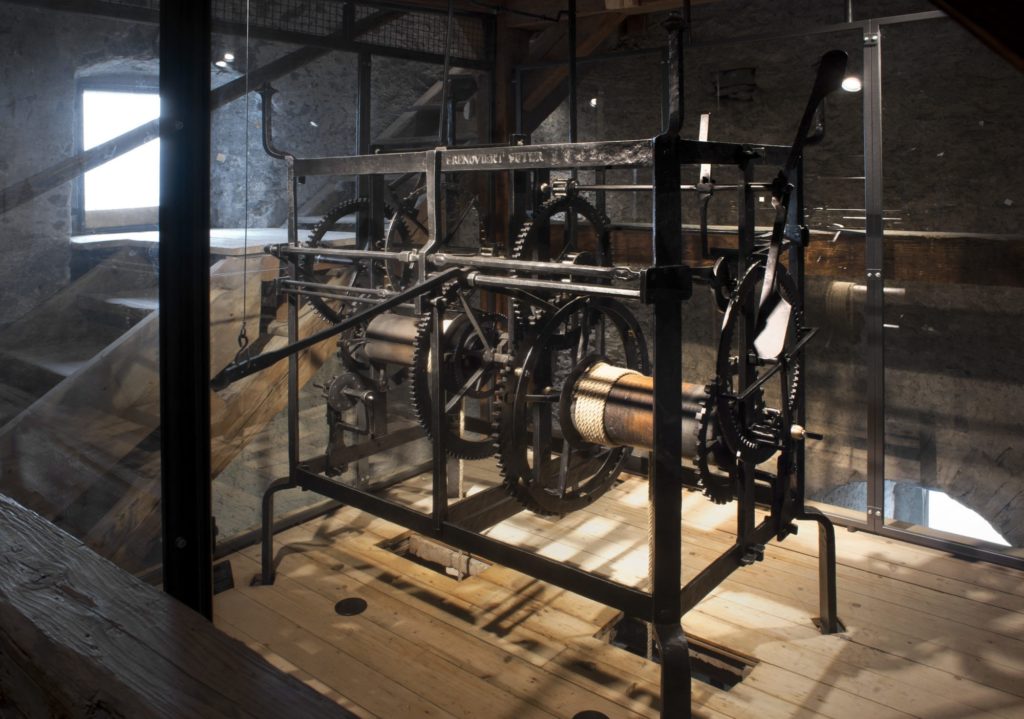
The Zytturm clock
In 1385 Master Heinrich Halder from Basel constructed the first public clock-tower clock for Lucerne and delivered it to the council of the City and Republic of Lucerne on 25th November 1385. At the time the Musegg fortification wall was under construction and the clock-tower had not yet been erected. The clock-tower clock was therefore installed in the Graggen tower which had its gate between Weggisgasse and Löwengraben. In 1403 the clock was finally transferred to the clock-tower.
In 1385 Halder also wrote down operating instructions for this clock-tower clock which have been preserved in the codex of burgess-ship of the City of Lucerne representing the oldest known document describing the operation of a mediaeval clock. The operating instructions, the oldest of their kind worldwide for a public clock-tower clock, contain remarkable facts regarding the assembly, construction, handling and maintenance of the clock. Today the document can be found in the sate archives of Lucerne.
In 1535 the clock-tower clock was refitted and Hansen Luter, a locksmith and clock-maker from Waldshut and burgher of Zurich, manufactured a new clock where the movements and wheels were structured in the same way as with Halder’s clock from 1385. The clock movement having two parts: the clock-work and the striking work. While the striking work is still the original, the clock-work was fitted with a corrected scissors escapement and a nine meter long pendulum oscillating with a rhythm of three seconds by clock-maker Suter in 1842.
The clock-tower clock strikes the hour one minute before time (privilege of first stroke). There are two explanations for this privilege. When a second public clock was installed in Lucerne the older of the two was allowed to chime before all other clocks. In the late Middle Ages and the early modern times the towns and their governments struggled for more independence from the church and the emperor. The privilege of first stroke of the public clock was a political message: It was a demonstration of power of the council of the City and Republic of Lucerne by having the public clock measuring the time and striking the hour before the church bells.
Since 1535 this clock has to be wound up every day by hand by the clock-maker of the city (: Zytrichter).
